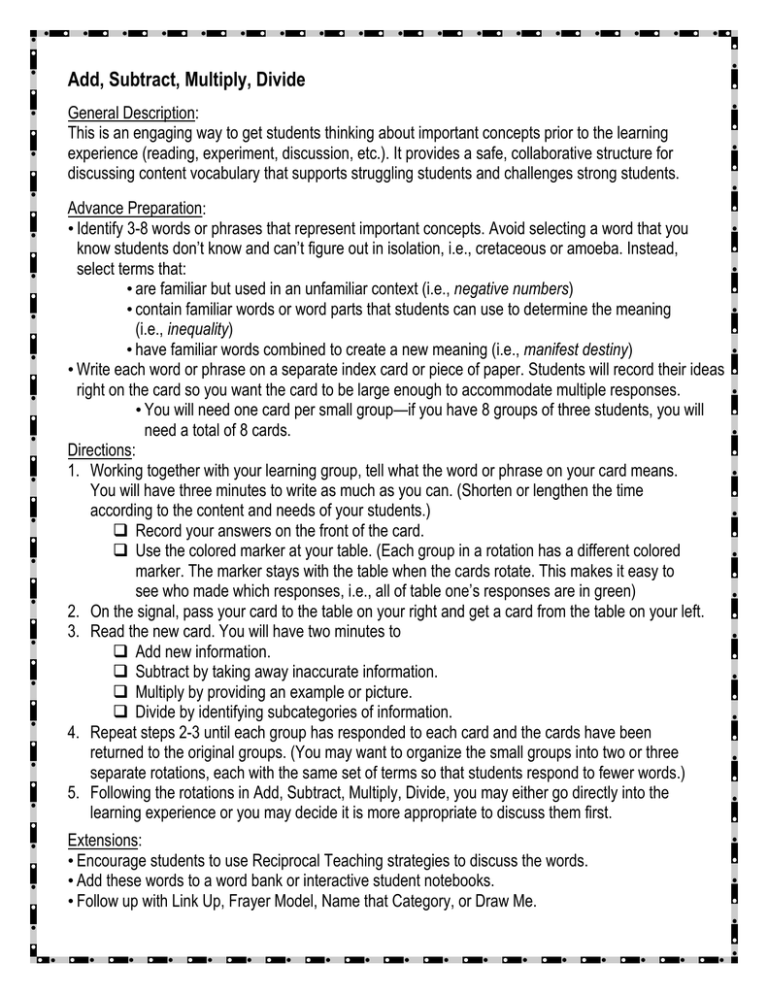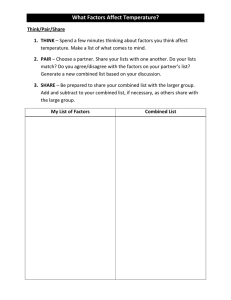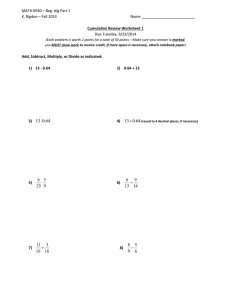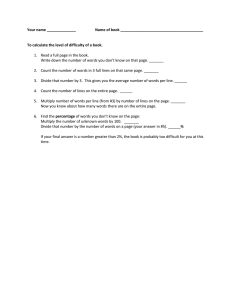Add, Subtract, Multiply, Divide
advertisement

Add, Subtract, Multiply, Divide General Description: This is an engaging way to get students thinking about important concepts prior to the learning experience (reading, experiment, discussion, etc.). It provides a safe, collaborative structure for discussing content vocabulary that supports struggling students and challenges strong students. Advance Preparation: • Identify 3-8 words or phrases that represent important concepts. Avoid selecting a word that you know students don’t know and can’t figure out in isolation, i.e., cretaceous or amoeba. Instead, select terms that: • are familiar but used in an unfamiliar context (i.e., negative numbers) • contain familiar words or word parts that students can use to determine the meaning (i.e., inequality) • have familiar words combined to create a new meaning (i.e., manifest destiny) • Write each word or phrase on a separate index card or piece of paper. Students will record their ideas right on the card so you want the card to be large enough to accommodate multiple responses. • You will need one card per small group—if you have 8 groups of three students, you will need a total of 8 cards. Directions: 1. Working together with your learning group, tell what the word or phrase on your card means. You will have three minutes to write as much as you can. (Shorten or lengthen the time according to the content and needs of your students.) Record your answers on the front of the card. Use the colored marker at your table. (Each group in a rotation has a different colored marker. The marker stays with the table when the cards rotate. This makes it easy to see who made which responses, i.e., all of table one’s responses are in green) 2. On the signal, pass your card to the table on your right and get a card from the table on your left. 3. Read the new card. You will have two minutes to Add new information. Subtract by taking away inaccurate information. Multiply by providing an example or picture. Divide by identifying subcategories of information. 4. Repeat steps 2-3 until each group has responded to each card and the cards have been returned to the original groups. (You may want to organize the small groups into two or three separate rotations, each with the same set of terms so that students respond to fewer words.) 5. Following the rotations in Add, Subtract, Multiply, Divide, you may either go directly into the learning experience or you may decide it is more appropriate to discuss them first. Extensions: • Encourage students to use Reciprocal Teaching strategies to discuss the words. • Add these words to a word bank or interactive student notebooks. • Follow up with Link Up, Frayer Model, Name that Category, or Draw Me.



